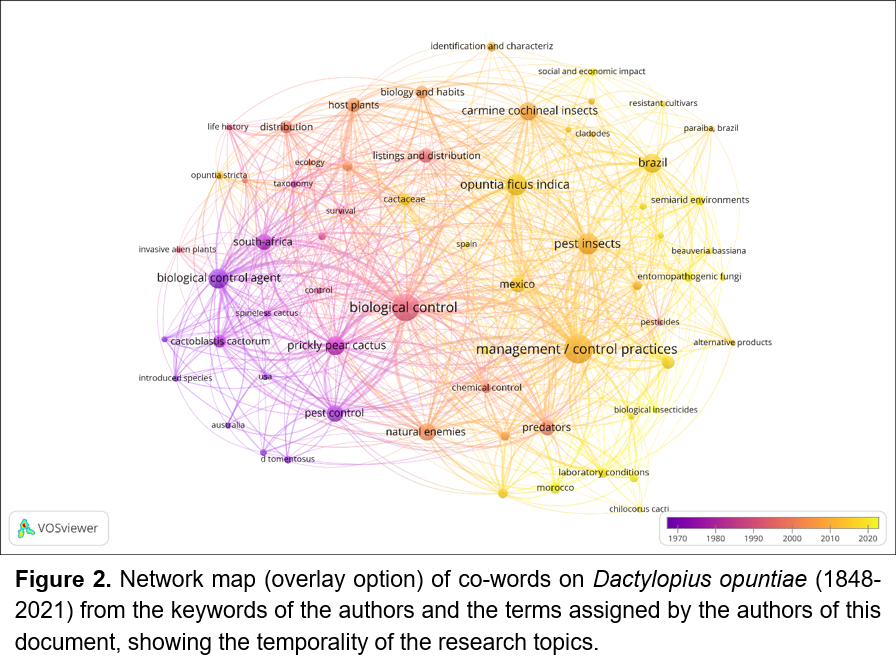Dactylopius opuntiae Cockerell (Hemiptera: Dactylopiidae), an emerging global threat for Opuntia spp: a bibliometric analysis
DOI:
https://doi.org/10.56890/jpacd.v24i.487Palabras clave:
Scientific production evaluation, Metric studies of the information, Co-word analysis, Emerging research trends, Co-autorship networkResumen
Dactylopius opuntiae Cockerell (Hemiptera: Dactylopiidae) is a worldwide successful biological control agent for some invasive Opuntia Mill. (Caryophyllales: Cactaceae) species, and a primary pest where this species is commercially cultivated, which has renewed its scientific interest. Therefore, this research characterized regularities of the scientific production and identified emerging research trends on D. opuntiae, using one-dimensional and multidimensional bibliometric indicators. The search and retrieve of metadata from nine scientific publications databases (Biological Abstracts, Cab abstracts, Crossref, Google Academic, Dimensions, Microsoft Academic Search, Science Citation Index Expanded, Scopus, and Zoological Record) was condensed into a 193 documents collection, spanning from 1848 to 2021 using the Zotero® bibliographic reference manager. Publish or Perish® and Excel® were used to generate one-dimensional indicators and VOSviewer® for multi-dimensional indicators. Eighty percent of the publications on D. opuntiae were registered in the last 20 years, which denotes the specie´s recently acquired importance. The addressed topics in the two assessed periods showed drastic changes, since, while in the first period (1848-2000) these were directed, particularly, to its applications as a biological control agent for various Opuntia species; during the next period (2001-2021), they focused on generating strategies for its eradication and control. A high number of non-peer-reviewed publications were not included in our studies, such as serials, books, theses, and conference proceedings. Despite the recent interest in D. opuntiae and the growing number of scientific documents, no previous publications were found that address this issue. Finally, the research allowed for the identification of emerging research trends and showed their locations and who makes up the clusters or research groups, and the addressed topics, which could facilitate collaboration networks establishment and contribute to the scientific development of D. opuntiae.
##plugins.generic.pfl.publicationFactsTitle##
##plugins.generic.pfl.reviewerProfiles## N/D
##plugins.generic.pfl.authorStatements##
Indexado: {$indexList}
-
##plugins.generic.pfl.indexedList##
- ##plugins.generic.pfl.academicSociety##
- Journal of the Professional Association for Cactus Development
- Editora:
- Professional Association for Cactus Development




